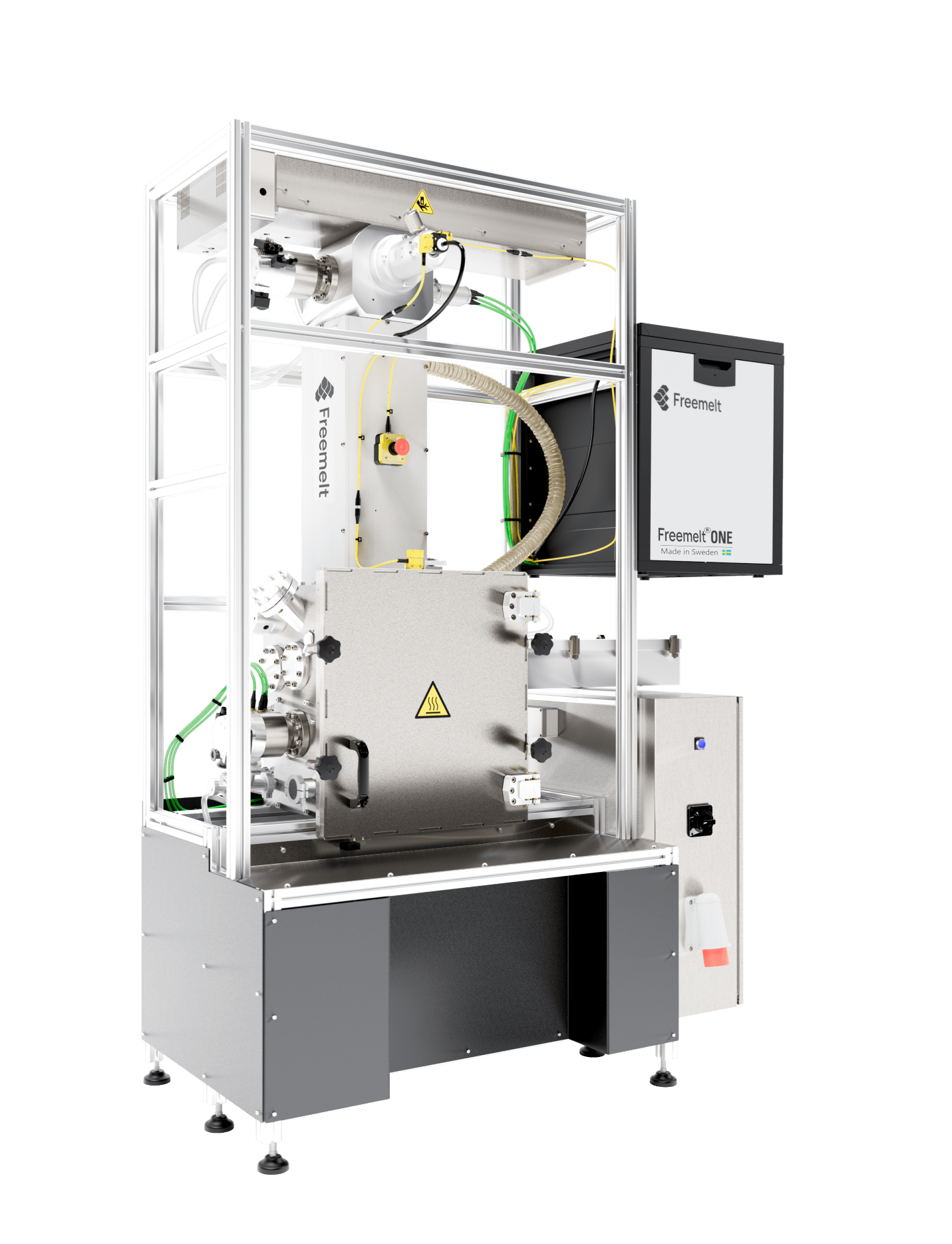Freemelt® ONE is versatile and user friendly. The machine is rigidly supported by a frame structure without an outer shell, giving open access to all ports on the vacuum chamber. If needed, the frame is easily modified to support third-party R&D equipment connected to the system. There are two operating sides to separate powder handling from machine operation:
The door side
Where the operator loads powder into the vacuum chamber and take out built parts.
The viewport side
Where the operator is observing and controlling the E-PBF process.













